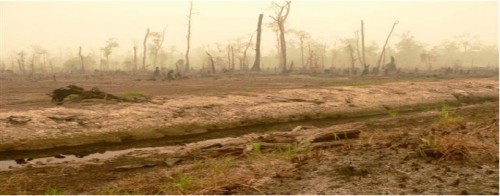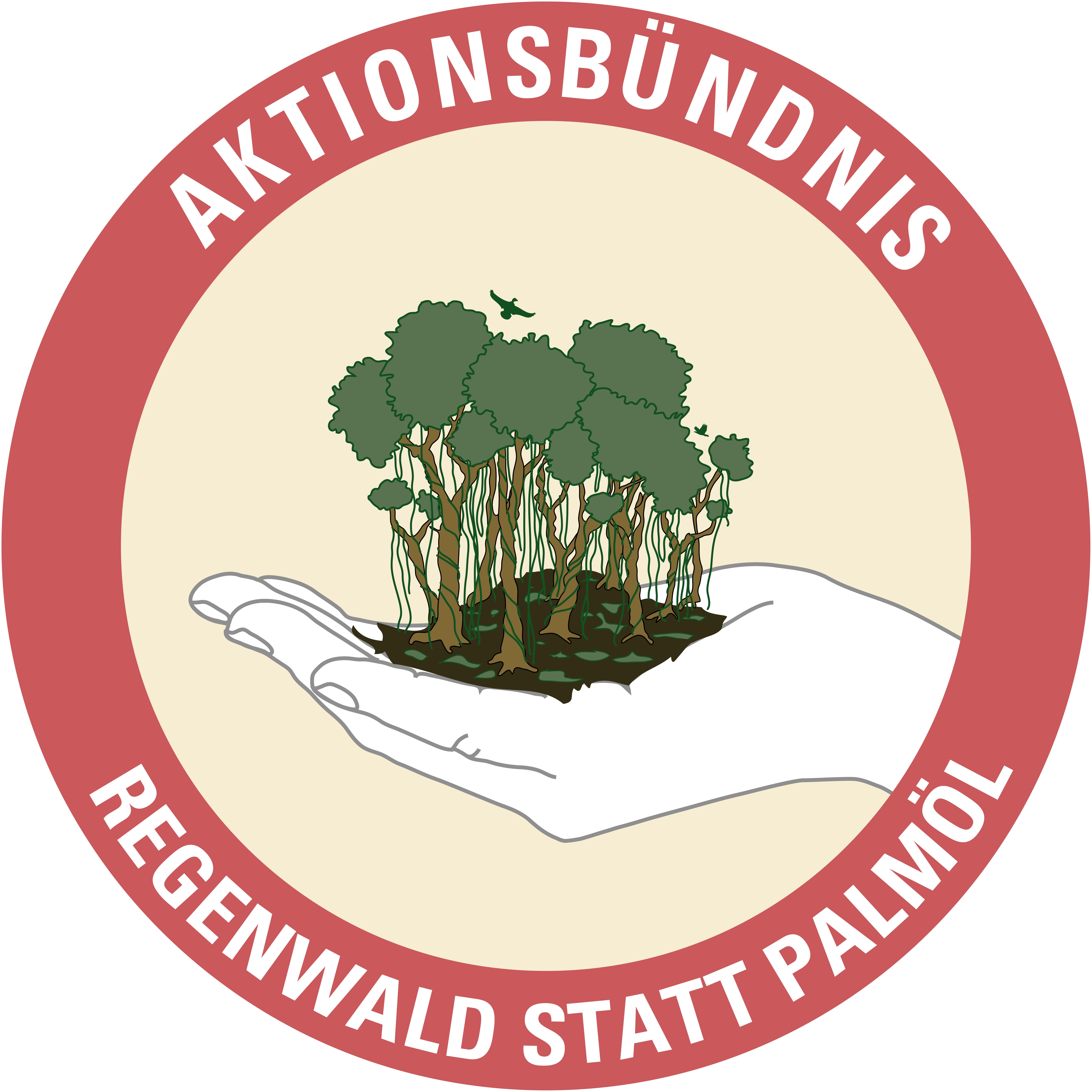September 2008
A briefing by The Gaia Foundation, Biofuelwatch, the African Biodiversity Network, Salva La Selva, Watch Indonesia! and EcoNexus
 MARGINAL, IDLE, DEGRADED, UNDER–UTLISED, SLEEPING, WASTELANDS AND ABANDONED CROPLANDS: all of these are different terms for what is being promoted as the „solution” to the impacts of growing crops for agrofuels. Partly in order to respond to accusations that agrofuels (also known as biofuels) compete with food production, some policy makers have proposed that agrofuel crops should be planted on land that is considered marginal or idle. We are told that there are millions of hectares of such land around the world, especially in Africa, which are of no importance for biodiversity or carbon sequestration, and which play no role in food production or, presumably, in guaranteeing people’s livelihoods. Some propose that planting „marginal lands” with agrofuels could be extremely positive, providing income for local communities and supplying an alternative to fossil fuels to the market. It has even been suggested that there should be incentives provided for using so-called marginal land, such as licences to emit more CO2. There is a widely held assumption that developing countries have vast tracts of wasteland, waiting for someone to put them to good use. But a closer look at these „marginal” lands tells a different story. In most cases, lands defined as „marginal”, „wasteland” or „idle” are vital for the livelihoods of small-scale farmers, pastoralists, women and indigenous peoples. What governments or corporations often call „marginal” lands are in fact lands that have been under communal or traditional customary use for generations, and are not privately owned, or under intensive agricultural production. The lives of the peoples living on these lands are all too often ignored. Communities that use these biodiversity-rich lands for food, income, grazing and medicine do not appreciate the denial of their existence. Nor do they always agree that the conversion of their lands for agrofuel production will bring „development” benefits. Many of these communities would prefer to continue to live as farmers, pastoralists or hunter-gatherers, than to be evicted and banished from their lands, on the elusive promise of meagre compensation or a few seasonal and poorly-paid jobs on agrofuel plantations. The evidence suggests that there really are very few genuinely „marginal” lands, or at least none that conform to the abandoned, empty and useless land of our imagination. Agrofuel policy based on „marginal lands” needs a serious rethink. […] read the complete report (PDF, 168 MB)
MARGINAL, IDLE, DEGRADED, UNDER–UTLISED, SLEEPING, WASTELANDS AND ABANDONED CROPLANDS: all of these are different terms for what is being promoted as the „solution” to the impacts of growing crops for agrofuels. Partly in order to respond to accusations that agrofuels (also known as biofuels) compete with food production, some policy makers have proposed that agrofuel crops should be planted on land that is considered marginal or idle. We are told that there are millions of hectares of such land around the world, especially in Africa, which are of no importance for biodiversity or carbon sequestration, and which play no role in food production or, presumably, in guaranteeing people’s livelihoods. Some propose that planting „marginal lands” with agrofuels could be extremely positive, providing income for local communities and supplying an alternative to fossil fuels to the market. It has even been suggested that there should be incentives provided for using so-called marginal land, such as licences to emit more CO2. There is a widely held assumption that developing countries have vast tracts of wasteland, waiting for someone to put them to good use. But a closer look at these „marginal” lands tells a different story. In most cases, lands defined as „marginal”, „wasteland” or „idle” are vital for the livelihoods of small-scale farmers, pastoralists, women and indigenous peoples. What governments or corporations often call „marginal” lands are in fact lands that have been under communal or traditional customary use for generations, and are not privately owned, or under intensive agricultural production. The lives of the peoples living on these lands are all too often ignored. Communities that use these biodiversity-rich lands for food, income, grazing and medicine do not appreciate the denial of their existence. Nor do they always agree that the conversion of their lands for agrofuel production will bring „development” benefits. Many of these communities would prefer to continue to live as farmers, pastoralists or hunter-gatherers, than to be evicted and banished from their lands, on the elusive promise of meagre compensation or a few seasonal and poorly-paid jobs on agrofuel plantations. The evidence suggests that there really are very few genuinely „marginal” lands, or at least none that conform to the abandoned, empty and useless land of our imagination. Agrofuel policy based on „marginal lands” needs a serious rethink. […] read the complete report (PDF, 168 MB)

MARGINAL, IDLE, DEGRADED, UNDER–UTLISED, SLEEPING, WASTELANDS AND ABANDONED CROPLANDS: all of these are different terms for what is being promoted as the „solution” to the impacts of growing crops for agrofuels. Partly in order to respond to accusations that agrofuels (also known as biofuels) compete with food production, some policy makers have proposed that agrofuel crops should be planted on land that is considered marginal or idle. We are told that there are millions of hectares of such land around the world, especially in Africa, which are of no importance for biodiversity or carbon sequestration, and which play no role in food production or, presumably, in guaranteeing people’s livelihoods. Some propose that planting „marginal lands” with agrofuels could be extremely positive, providing income for local communities and supplying an alternative to fossil fuels to the market. It has even been suggested that there should be incentives provided for using so-called marginal land, such as licences to emit more CO2. There is a widely held assumption that developing countries have vast tracts of wasteland, waiting for someone to put them to good use. But a closer look at these „marginal” lands tells a different story. In most cases, lands defined as „marginal”, „wasteland” or „idle” are vital for the livelihoods of small-scale farmers, pastoralists, women and indigenous peoples. What governments or corporations often call „marginal” lands are in fact lands that have been under communal or traditional customary use for generations, and are not privately owned, or under intensive agricultural production. The lives of the peoples living on these lands are all too often ignored. Communities that use these biodiversity-rich lands for food, income, grazing and medicine do not appreciate the denial of their existence. Nor do they always agree that the conversion of their lands for agrofuel production will bring „development” benefits. Many of these communities would prefer to continue to live as farmers, pastoralists or hunter-gatherers, than to be evicted and banished from their lands, on the elusive promise of meagre compensation or a few seasonal and poorly-paid jobs on agrofuel plantations. The evidence suggests that there really are very few genuinely „marginal” lands, or at least none that conform to the abandoned, empty and useless land of our imagination. Agrofuel policy based on „marginal lands” needs a serious rethink. […] read the complete report (PDF, 168 MB)







